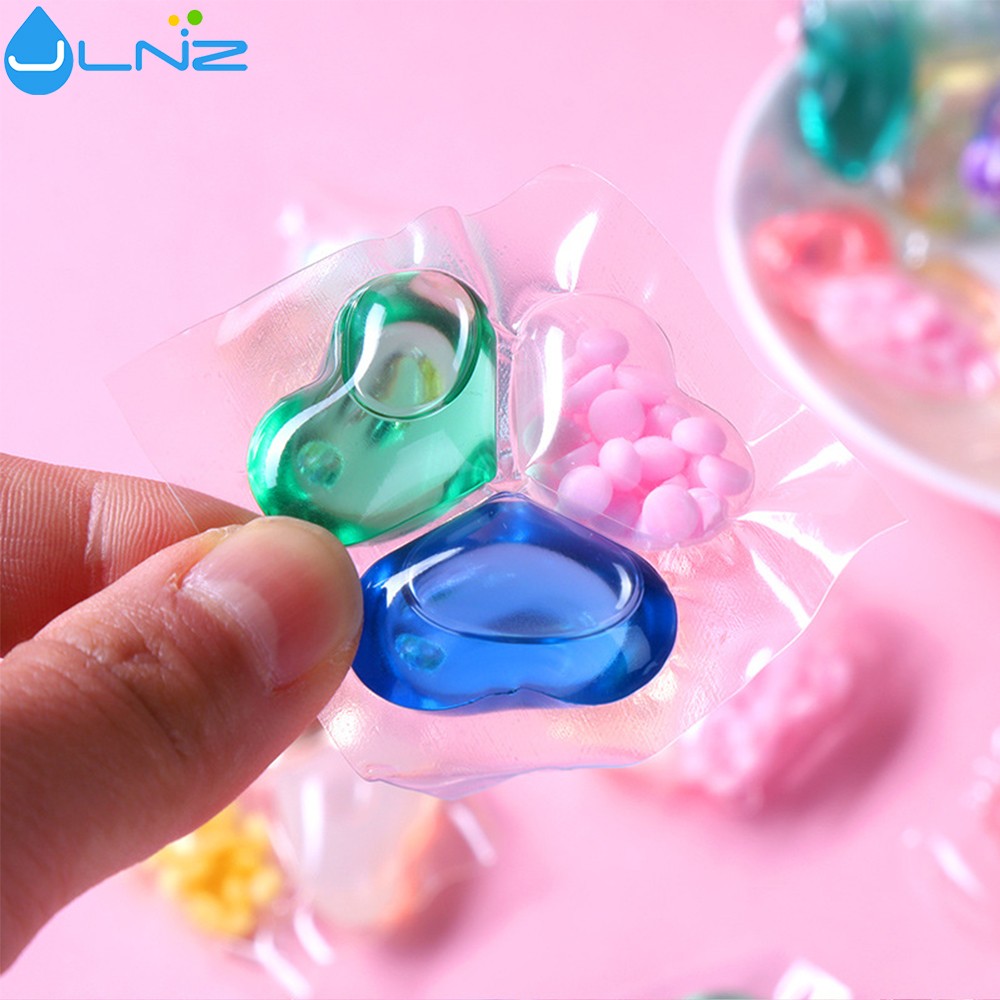
Laundry pods have become a staple in modern homes due to their convenience and effectiveness. But what exactly goes into these little laundry capsules? The composition of laundry pods is a delicate balance of chemistry and engineering, designed to clean clothes efficiently while ensuring that the pods dissolve easily in water. Understanding the ingredients and how they work together can help us appreciate the science behind these everyday cleaning tools.
Main Ingredients in Laundry Pods
At first glance, laundry pods may seem like a simple product, but they are carefully formulated with several key ingredients. The primary components include:
Detergents: The core cleaning agents in laundry pods are surfactants, which are responsible for breaking down grease, oils, and dirt on clothing. These detergents work by lowering the surface tension of water, allowing it to penetrate fabric fibers and lift away contaminants.
Surfactants: These molecules have two parts: a hydrophilic (water-attracting) head and a hydrophobic (water-repelling) tail. This unique structure allows surfactants to surround and suspend dirt particles in water, which can then be rinsed away.
Enzymes: Some laundry pods also include enzymes, which are proteins that break down specific types of stains. Enzymes are particularly effective for tackling protein-based stains like blood, sweat, or food. By breaking down these complex molecules, enzymes make it easier for detergents to remove the stains from fabric.
Fragrances: To give your laundry a fresh, clean scent, most pods contain a combination of synthetic or natural fragrances. These compounds are designed to mask unpleasant odors while leaving behind a pleasant aroma after washing.
Colorants: Some pods also contain colorants, which give the detergent its signature appearance. These colorants are typically harmless and serve a cosmetic function rather than a cleaning one.
How Each Ingredient Works
Detergents and Surfactants: Detergents are the primary active ingredients in laundry pods. When added to water, they break up dirt and grease, allowing the cleaning agents to surround and lift the particles away from fabric. Surfactants play a crucial role in this process, especially for oils, which don't naturally mix well with water.
Enzymes: Enzymes are specific to the types of stains they target. Proteases, for example, break down protein-based stains, while amylases target carbohydrate-based stains like starches. Lipases, on the other hand, break down fats and oils. These enzymes work best when used in warm water, although many modern laundry pods are formulated to work effectively in both cold and hot water.
Fragrances: Fragrances in laundry pods provide the finishing touch to a clean load of laundry. The fragrance molecules attach to fibers in the clothes, leaving a lingering scent. Some pods are specifically designed with hypoallergenic fragrances for sensitive skin.
Colorants: While not essential to the cleaning process, colorants help distinguish the pods from one another, allowing consumers to easily identify the type of detergent (e.g., pods with added fabric softener or stain removers). The colorants used are typically safe and designed not to stain fabrics.
How Laundry Pods Are Formulated
Formulating laundry pods requires a precise combination of ingredients to ensure that the pod cleans effectively without causing damage to the clothes or the washing machine. The ingredients are typically mixed and concentrated to maximize cleaning power while keeping the pod compact and easy to use.
The detergent and surfactant mixture is often encased in a dissolvable film, which ensures that the contents are released at the right time during the washing cycle. The film is designed to dissolve in water of all temperatures, which helps to ensure that the pod works in both hot and cold washes. The dissolving process is engineered to be rapid, allowing the pod to release its contents early in the wash cycle.
Types of Ingredients Used in Laundry Pods
Different types of ingredients are used in laundry pods depending on the specific formula and intended use. Some common types of laundry pods include:
All-in-One Pods: These pods contain a combination of detergent, fabric softener, and sometimes even stain removers or brighteners. All-in-one pods are designed to make laundry care as simple as possible, reducing the need for separate products.
Sensitive Skin Pods: These pods are often fragrance-free or use hypoallergenic fragrances and are designed for individuals with skin sensitivities. The detergents used are typically milder, and the formulas avoid harsh chemicals.
High-Efficiency Pods: These pods are specifically formulated for use in high-efficiency (HE) washing machines, which require less water and detergent. They often have a more concentrated formula and a special dissolvable film that works well in HE machines.
Eco-Friendly Pods: These pods are made with biodegradable ingredients and often come in recyclable or compostable packaging. The goal is to reduce the environmental impact while maintaining cleaning effectiveness.
Why Composition Matters
The precise composition of laundry pods is crucial for their performance. The right combination of surfactants, enzymes, fragrances, and other ingredients ensures that the pod works effectively in various water temperatures, removes stains, and leaves clothes feeling fresh. Additionally, the dissolvable film must be able to break down quickly to ensure that all ingredients are released during the wash, while not leaving any residue behind.
By carefully selecting the right ingredients and ensuring that they work together in harmony, manufacturers can create laundry pods that provide superior cleaning performance, are easy to use, and are safe for both your clothes and the environment.
Copyright © 2025 Guangdong Jingliang household chemicals Co., Ltd. | All Rights Reserved Privacy policy
Hello, please leave your name and email here before chat online so that we won't miss your message and contact you smoothly.